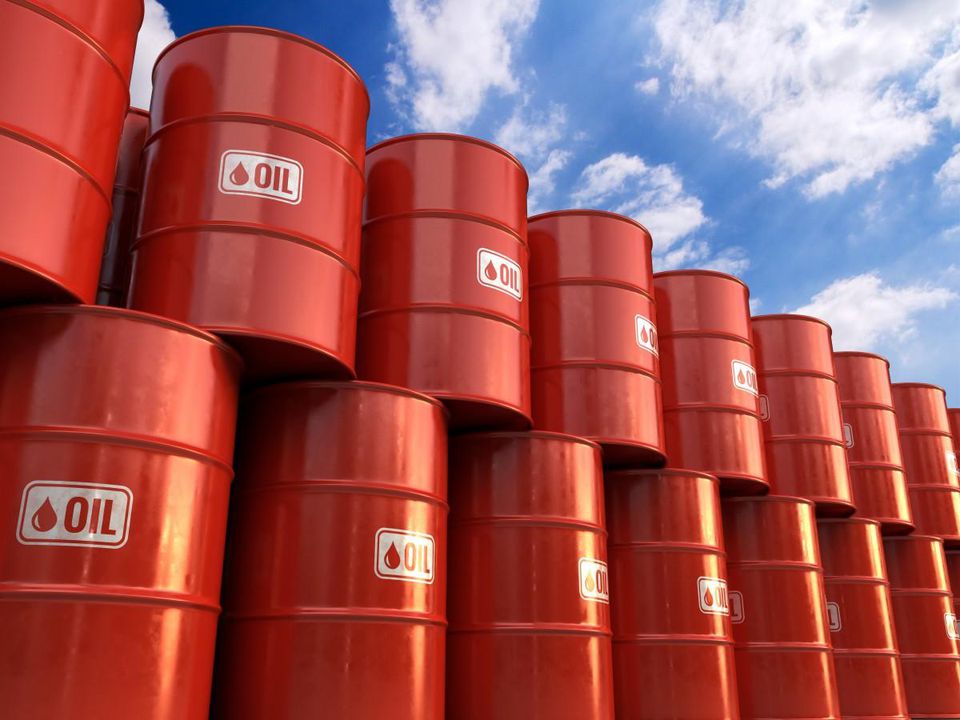The rising oil price
April 25, 2018 | Expert Insights

For the first time in over three and half years, the price of oil touched $75. The rise of oil prices has partly been attributed to increased fears of new US sanctions on Iran. Prices spiked almost immediately after US President Donald Trump labelled the Iran nuclear deal, “insane.”
As stated earlier, India will spend approximately $1.3 billion more every year for a one dollar per barrel increase in crude prices.
Background
The Organization of the Petroleum Exporting Countries (OPEC) is group comprised of 14 oil producing nations. It was founded in 1960. The current members of OPEC are - Algeria, Angola, Ecuador, Equatorial Guinea, Gabon, Iran, Iraq, Kuwait, Libya, Nigeria, Qatar, Saudi Arabia, United Arab Emirates, and Venezuela. Indonesia used to be a member, but it suspended its OPEC membership in December 2016.
A supply glut resulted in the dramatic drop in oil prices after 2014. In order to address this issue, OPEC nations came to an agreement in November 2016 to cap their output until the oil glut was reduced. In May 2017, they agreed to extend that deal by nine months. In July 2017, the OPEC nations met once more to discuss plans on whether they should further cap oil output by 1.8 million bpd beyond March 2018.
In February 2018, discussions between OPEC and its oil-producer allies concluded that the supply glut was dissipating at a faster pace than previously anticipated. The price of oil rose past $60 in recent months.
However, there are still concerns among OPEC nations that increased production in the United States would affect any effort to address the oil glut. There are additional fears that the oil prices will once again fall dramatically, thus resulting in an economic crisis in multiple oil producing nations.
How crisis affects oil prices
World crises and unrest, especially when it takes place in oil producing nations immediately causes oil prices to shoot up. This happened in 2012, after inspectors found proof that Iran was closer to building nuclear weapons capabilities. As a result, oil prices bounced around $95 to $100 a barrel from November through January. In mid-February, oil broke above $100 a barrel. Another recent example of a crisis affecting oil prices is the Arab spring protests. In March 2011, investors became concerned about unrest in Libya, Egypt and Tunisia and oil prices rose above $100 a barrel.
Analysis
For the first time since 2014, oil prices climbed past $75 in April 2018. This is largely due to concerns regarding the kind of geopolitical risks that would be triggered if the Iran nuclear deal collapsed. For a more detailed look at the nuclear deal, click here.
US President Donald Trump has often been a harsh critic of the deal and has given the European signatories until May 12th to fix the problems that he perceives with the deal. Otherwise, he has warned, that the US would withdraw and effectively nullify the landmark agreement. Tamas Varga of oil broker PVM said the prospect of the US pulling out of the nuclear accord was the most significant element of Brent's recent rally. "All bets are off on the US staying in the nuclear agreement," he said. The other signatories of the deal (UK, France, Germany, Russia and China) have signaled their intention to continue the accord. In addition, Iran has threatened to immediately resume its nuclear programme if the US were to walk away from the deal.
“It will be an uphill challenge for Macron to craft an agreement that is tough enough to satisfy Trump and his hawkish advisers and at the same time is acceptable to the Iranian leadership,” said Helima Croft, head of commodity strategy at RBC Capital Markets LLC in New York.
It should be highlighted that Iran’s oil exports would drop by as much as 500,000 barrels a day in 2018 and 700,000 barrels a day in 2019 if the U.S. revives sanctions on the region.
However, the rise in oil prices has been met with contentment by Saudi Arabia. “We have seen a remarkable year in 2017 -- the market of crude has been restored and went to healthy numbers,” United Arab Emirates Energy Minister Suhail Al Mazrouei said at the International Petroleum Week conference in London in 2018. “Ahead of us this year is the balance of supply and demand.” Despite Saudi Arabia’s optimism, fears remain that U.S. drillers may continue boosting output to record levels and offset the group’s effort to balance the market.
Assessment
Our assessment is that increased tensions in the Middle East have triggered the rise in oil prices. There are some reports suggesting that Saudi Arabia expects the price of oil to rise above $100 per barrel. However, that prospect seems unlikely despite the potential for crisis in Iran. The increase in US shale will likely prevent prices from increasing above $80 in 2018. This has implications for countries across the world including India.
Read more: The rise of oil








Comments